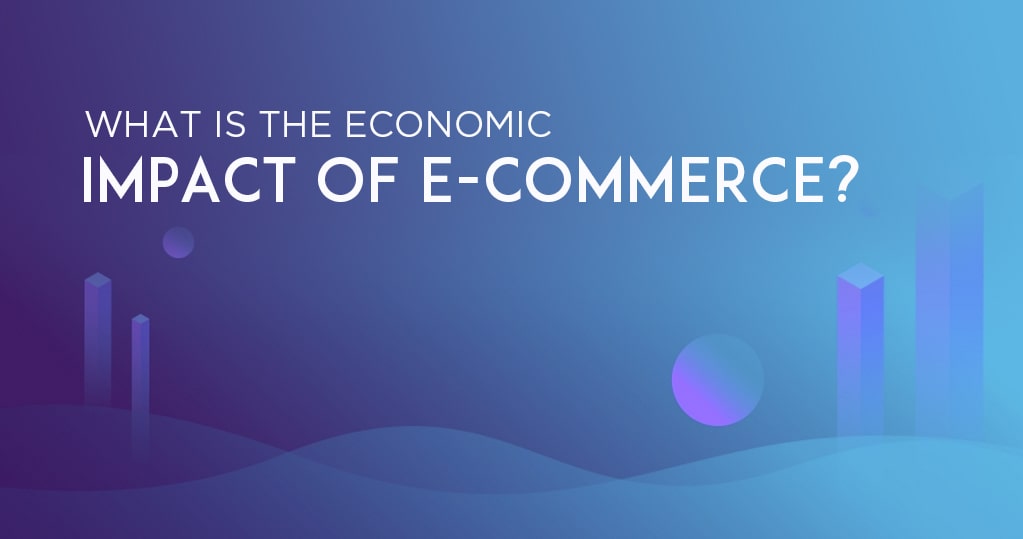Ecommerce is a method for directing business over the Internet. The fact is that a moderately new idea can adjust the conventional type of economic exercises. As of now, it influences such huge parts as communications, finances, and retail transactions. It holds guarantee in zones, for example, education, wellbeing, and government. The most significant impacts might not be with a considerable set of effects that order must take into consideration. However, with the less precise yet conceivably more unavoidable notion, it can impact the routine business exercises.
On account of the advancement of electronic commerce, the most essential of financial transactions—the purchasing and selling of products—keep on experiencing changes that will profoundly affect how organizations deal with their supply chains. Ecommerce has changed the work on, timing, and innovation of business-to-business (B2B) and business-to-consumer (B2C) trade. It has influenced valuing, product accessibility, transportation marking, and buyer conduct in developed economies around the world.
The presentation of ecommerce in the course of the last 15 to 20 years has majorly affected society, and the method for business is done on the Global scale. This had numerous beneficial outcomes on both the business and the shopper as they are vital points that hurt both the client and the organizations. Here, we talk about the effect of the hazard related to ecommerce to an association to Global Business and Society as a rule to help comprehend the impact of ecommerce solutions understand above all else the significance of ecommerce. It implies to sell merchandise both in an offline store and on online sites.
The economic impact of ecommerce
The effect on buyer

Empowering individuals to shop online has a massive positive impact on shoppers all through the world. The buyer’s shopping experience is more significant than any other time in recent memory. They are dancing with joy as products are accessible to them at a much lower cost than they would be in nearby stores. The key reason behind delight is, they can shop anyplace on the planet and utilize money transaction standard and monetary distinctions all through the world.
Direct correspondence with the client
One thing you could state about utilizing ecommerce as intend to sell your product to those clients who are resistant to not having that eye to eye contact with a salesperson. That could be a specific downpour with the more seasoned age who are not computerized local, and it is ludicrous to buy online as its detract from an attempt before you purchase the product. Individuals who are sure utilizing the web to order can communicate on the web and are reliance on up close and personal contact with the customer at the hours of need as the product is requested gasp and the communication happens on the web. The client attempt before they purchase examining the product audits for product to perceive what the order has.
Lower cost
Ecommerce is the best case of lower value clients. One who can go without much of a stretch contrast the product with its offline market seller. Ecommerce can completely attempt to speak with the client with the assistance of such a large number of online devices like emails. They can convey and speak with the client, utilizing email pamphlet, illuminating them regarding the extraordinary offers and limited stock that they may be keen on purchasing. Again, this enables the client and keeps them in the loop of the most recent deals that could be a piece of importance to them.
B2B ecommerce is leading

The business to business ecommerce represents by far most of the absolute online deals and assumes the main job in worldwide production network systems. In 2003, around 21 percent of manufacturing deals and 14.6 percent of wholesale sales in the United States were ecommerce related; by 2008, those rates had expanded to the right around 40 percent for the fabrication sector and 16.3 percent for wholesale trade. The primary reason behind why B2B ecommerce is more complex and more prominent than direct-to-buyer ecommerce is those B2B transactions created from the Electronic Data Interchange systems of the 1970s and 1980s. The consistent development of the business to business ecommerce has changed the expense and benefits picture for organizations around the globe. At the microeconomic level, the growth of B2B ecommerce brings about a generous decrease in transaction costs, improved store network management, and diminish expenses for domestic and worldwide sourcing. At the macroeconomic level, the substantial development of B2B ecommerce puts descending weight on inflation and increasing efficiency, net revenues, and competitiveness.
Twofold development for B2C
Ecommerce retail had become the quickest developing transaction segment and has outpaced every trade and manufacturing area since 1999 when the U.S. Census Bureau began gathering and distributing data on ecommerce. That year, ecommerce retail deals spoke to under 1 percent of complete U.S. retail deals. In 2003, that number moved to somewhat less than 2 percent; by 2008, it had developed to 3.6 percent, and by the final quarter of 2010, B2C ecommerce arrived at 4.4 percent of absolute U.S. retail deals. In terms of the dollar, ecommerce retail income, right now, remains at around the U.S. $165 billion, significantly not precisely the U.S. $3.9 trillion that speaks to the total U.S. retail market. During the ‘Great Recession,’ which endured from December 2007 through June 2009, manufacturing, wholesale, and bricks-and-mortar retail deals took a substantial beating. By the final quarter of 2010, despite everything, they had not wholly recuperated, even though U.S. GDP and individual spending had outperformed their past pinnacles seen in late 2007.
Retail ecommerce, on the other hand, endured the downturn generally well, but with significantly slower development than had been seen before the budgetary emergency. In the initial quarter of 2002, retail ecommerce encountered quarterly, year-over-year growth of around 42 percent. On the eve of the downturn, that rate dropped to a still-good 18 percent. Quarterly deals kept on developing until the last quarter of 2008, and in the final quarter of 2009, deals outperformed the past pinnacle. It’s essential to note here that an enormous quarter of B2C deals come through email-order houses still have a substantial online presence just as customary retail façade outlets. In opposition to prominent sentiment, email-order houses still have a significant scope of commerce, and until recently, their business outflanked online-only retailers.
Economic, social changes

The progressions that B2C ecommerce has started have had a progressively noteworthy effect on the economy and on purchasers’ conduct than has B2B ecommerce. Previously, when shoppers needed to make buys, they needed to put aside time to shop during specific hours of the day, or they needed to peruse inventories sent to them via email-order houses. Today, numerous buyers can primarily utilize their P.C.s—and now advanced mobile phones or other compact electronic gadgets—to shop on the web. Purchasers and merchants that participate in ecommerce retail transactions are never again limited by store hours, geographic promoting territories, or inventory mailing records. With a couple of easy-to-use snaps, they can access an assortment of products 24 hours every day, seven days per week. The qualities of retail ecommerce stock additionally have changed radically over the previous decade. In 2000, P.C. equipment was the most widely recognized sort of product sold over the Internet. Today, the assortment of products is very differing, and customers can purchase nearly anything on the web.
Online customers have profited in different manners. The development of ecommerce retail deals has discounted shoppers’ pursuit cost, put descending weight on numerous customer costs, and scaled-down value scattering for some purchaser merchandise. In any case, this has prompted a generous reduction in the number of little organizations working in specific businesses, as they will, in general, be less associated with ecommerce. More significant organizations, most quite retail book outlets, new vehicle vendors, and trip specialists, are better ready to contend in this original market condition. The rapid development of ecommerce retail deals has given a significant lift to private delivery administrations. That is because online product shopping includes some type of private conveyance by an outsider merchant, for example, FedEx, UPS, or the U.S. Postal Service. What’s more, there have all the earmarks of being powerful cooperative energies identified with B2C package and heavier cargo volumes—parcel industry insiders have seen that organizations with substantial ecommerce-related B2C parcel shipment volumes regularly have more grounded B2B shipment volumes than those that don’t participate in B2C ecommerce.
Ecommerce impacts order labeling
As an innovation, ecommerce, and globalization become more interlaced, purchasers and vendors are expanding their network and the speed with which they directly deal transactions. As we saw during the ongoing disturbance in the monetary markets and some production network systems, accelerating deals transactions can be an extremely positive quality when small market rectifications are occurring. Notwithstanding, during a significant financial revision like the one we saw during the Great Recession, a faster reaction to deals transactions can have falling effects on supply chains, bringing about enormous constrictions or developments in orders, production, shipments, and stock. That is because years prior, it may have taken two years for occasions in a single nation to influence another’s economy. Presently, on account of innovation and moment correspondence, the effect can be practically prompt. In this way, there are some possible negative results in the quick development of ecommerce. In this unstable business condition, inventory network supervisors ought to consider creating methodologies for managing the fast swings that can come about because of expanding the utilization of ecommerce in a globalized market.








